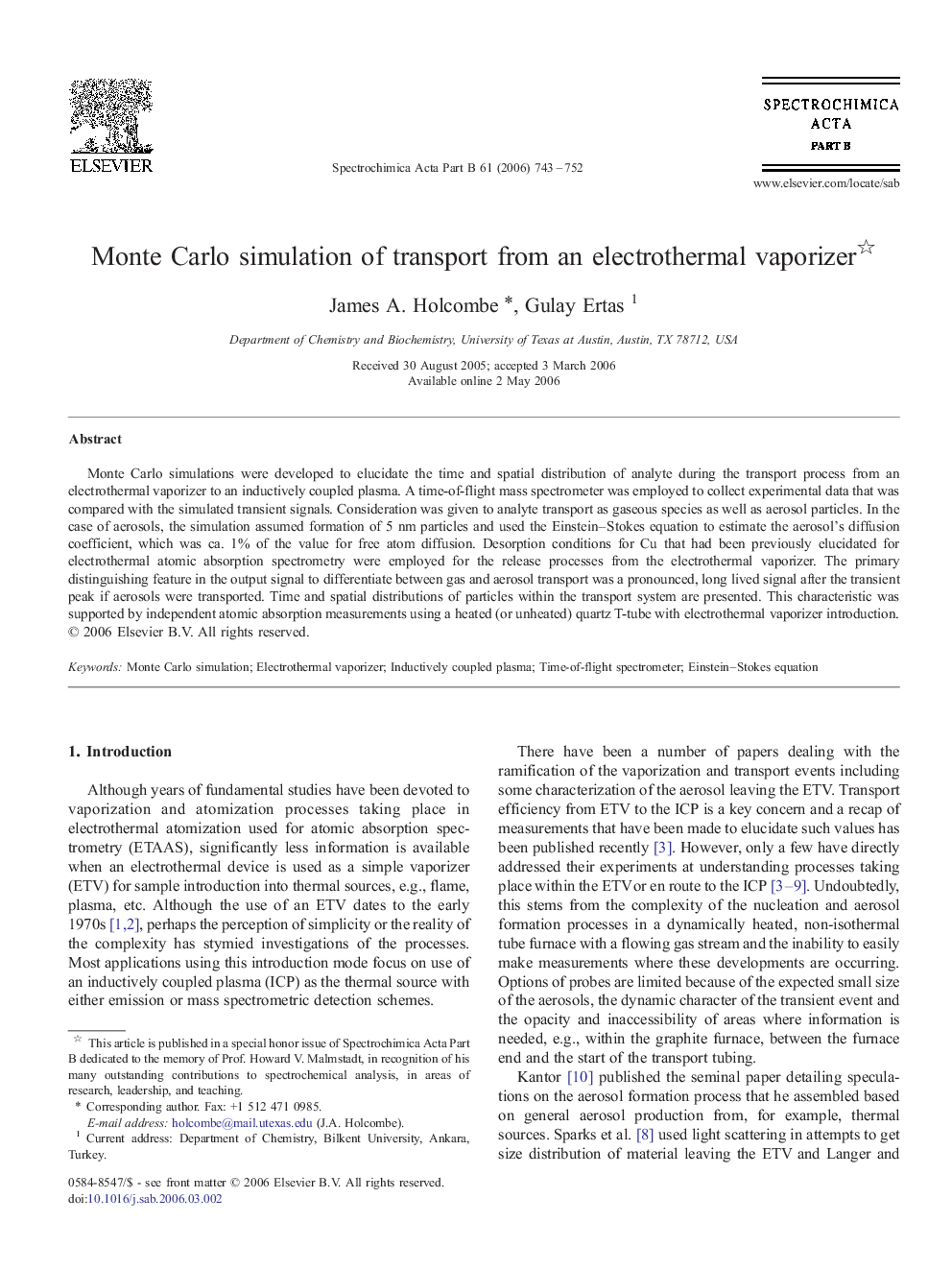| Article ID | Journal | Published Year | Pages | File Type |
|---|---|---|---|---|
| 1241046 | Spectrochimica Acta Part B: Atomic Spectroscopy | 2006 | 10 Pages |
Abstract
Monte Carlo simulations were developed to elucidate the time and spatial distribution of analyte during the transport process from an electrothermal vaporizer to an inductively coupled plasma. A time-of-flight mass spectrometer was employed to collect experimental data that was compared with the simulated transient signals. Consideration was given to analyte transport as gaseous species as well as aerosol particles. In the case of aerosols, the simulation assumed formation of 5Â nm particles and used the Einstein-Stokes equation to estimate the aerosol's diffusion coefficient, which was ca. 1% of the value for free atom diffusion. Desorption conditions for Cu that had been previously elucidated for electrothermal atomic absorption spectrometry were employed for the release processes from the electrothermal vaporizer. The primary distinguishing feature in the output signal to differentiate between gas and aerosol transport was a pronounced, long lived signal after the transient peak if aerosols were transported. Time and spatial distributions of particles within the transport system are presented. This characteristic was supported by independent atomic absorption measurements using a heated (or unheated) quartz T-tube with electrothermal vaporizer introduction.
Related Topics
Physical Sciences and Engineering
Chemistry
Analytical Chemistry
Authors
James A. Holcombe, Gulay Ertas,
